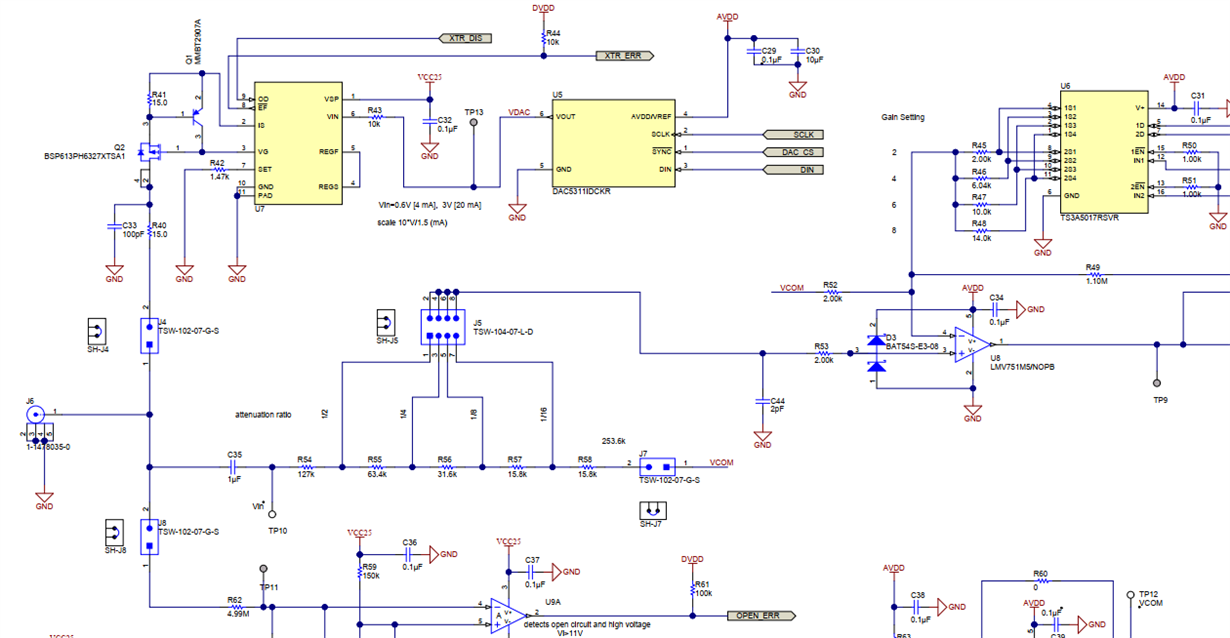Other Parts Discussed in Thread: TIDA-01471, DAC5311, OPA2197
Hi
We would like to use the XTR111 as part of a programmable current source foe use with IEPE sensors, as described in TI's TIDA-01471 IEPE Vibration Sensor Interface for PLC Analog Input Reference Design. The IEPE circuit in the reference design is basically what we need.
Looking through the datasheet for the XTR111 I have once concern. Figure 6 of the datasheet shows a graph of the Input-Referred Noise Spectrum. There are a number of noise spikes at frequencies of 10kHz, 20kHz.. 50kHz, due, I understand, to the chopping nature of the current source in the XTR111. Our application requires an analog bandwidth of 20kHz & so I am concerned that some of this noise might appear in the signal path from the IEPE sensor.
Figure 6 shows the noise as a voltage, typically 10uVrms RTI when I=2mA. How do I relate this noise voltage to the output current from the XTR111/External PNP transistor? We plan to use the DAC5311 as per the reference design and design for 0 to 3V == 0 to 20mA. Do these spikes increase with current?
regards
Steve


